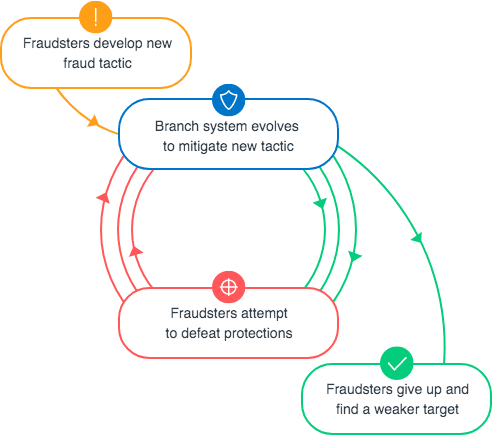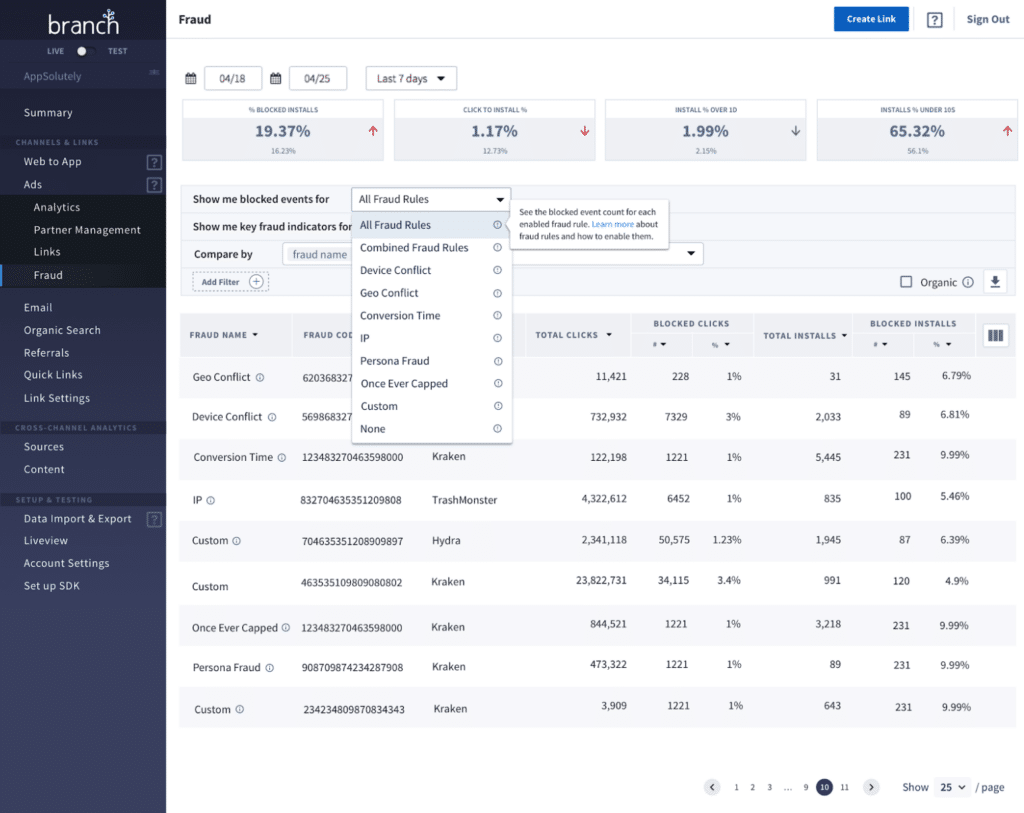Mobile Ad fraud is the big bad wolf of the advertising industry. Fraudulent conversions can cause advertisers higher bills and skewed campaign data that leads to inefficient investment decisions. It’s important to protect yourself (and your budget) from the negative impacts of ad fraud.
Since the primary goal of any fraud solution should be to minimize cost, to really assess a fraud solution’s effectiveness, we need a framework for assessing cost. To do so, let’s first split errors into two buckets:
- False negative: A fraudulent event that slips through detection cracks.
- False positive: An event that is incorrectly flagged as fraud.
Costs of a False Negative
Spend: The cost of digital ad fraud worldwide was estimated to reach a historic high of $44 Billion (USD) by 2022, and every fraudulent event that goes undetected is contributing to this multibillion-dollar problem.
The dangerous loop: Moreover, since this undetected fraudulent data is combined with healthy traffic in your reports, bad traffic sources can often be disguised as ROI-positive. As a result, you may continue to invest in fraud-prone sources, which further incentivizes fraudsters to continue attacking those networks and your budget.
People hours: If you bring up concerns of fraud to an ad network, they will require clear evidence of fraud to recoup any of your spend. Searching for evidence of fraud, even to find a fraction of the errors, can take hours of analysis.
Wait time: Even worse, if your ad network has already paid the sub-publisher for bad traffic you present, they will want to recoup their own spend before reimbursing yours. This drawn-out process takes up even more time from your team, and has the potential to damage your relationship with your ad network.
In contrast, let’s take a look at the cost associated when normal events are flagged as fraud.
Costs of a False Positive
If the error rate is high enough, you might choose to spend fewer dollars with an ad network that was bringing in good, healthy traffic. That’s it — that’s the entire cost to you.
However, there are costs to other parties to consider:
- The ad network unfairly loses credit for a good conversion. In our experience, however, networks understand the preference for a more conservative approach. They also appreciate the people-hours they gain back not having to recoup money from sub-publishers.
- Your attribution provider can’t charge for the attribution — which only applies if your attribution provider charges per attribution.
Of course, neither error type is desirable, but false positives are far less damaging and costly. Therefore, an effective fraud solution will act conservatively within this framework to protect you from the costs of false negatives.
Meet Branch’s leading tool kit for blocking advanced kinds of fraud
Being able to detect fraudulent behavior is the first step in protecting your advertising budget, but that’s only half of the battle. An event may be flagged as fraud, but until the attribution is blocked, almost none of the cost is reduced for you. You need a partner like Branch that tightly couples detection with response to ensure no payouts are made on fraudulent activity. Branch’s cross-platform infrastructure detects new kinds of fraudulent behavior by incorporating data signals no other provider can match, but it doesn’t stop there. Branch will always opt to block attribution credit where there are adequate signals of fraudulent traffic in real time, as opposed to just flagging the data.
In addition to blocking generic fraud with industry-standard blocking rules, Branch is uniquely positioned to help you block advanced fraud through collaboration and leading tools to help you understand how you’re being defrauded in unique ways and stop it.

Visibility and reporting are vital when it comes to understanding and blocking unique fraud. Line-item reporting for 1) blocked fraud and 2) the reason it was blocked is available in the Branch Fraud dashboard, separate from your healthy analytics. This gives you a new level of transparency into which ad networks were bringing in suspicious traffic and prevents bad sources from appearing more ROI-positive than they really are.

Branch’s fraud protection comes without conflicts of interest
Branch’s advanced fraud protection is included for all customers by default because we believe comprehensive fraud protection should be a core part of any attribution offering. Moreover, unlike other MMPs, Branch does not monetize based on conversions, which means we have no conflict of interest in blocking bad attributions, nor do we need to tack a hefty price tag onto our fraud solution to combat the losses of blocked conversions.
With high quality, clear data and a combination of accurate detection and quick, flexible response, Branch protects you from the hefty costs of false negatives, saving you time and spend.
Download the white paper, Mobile Ad Fraud Prevention Best Practices, to learn more — and stay tuned for more posts in this series on Branch’s fraud solution.





















